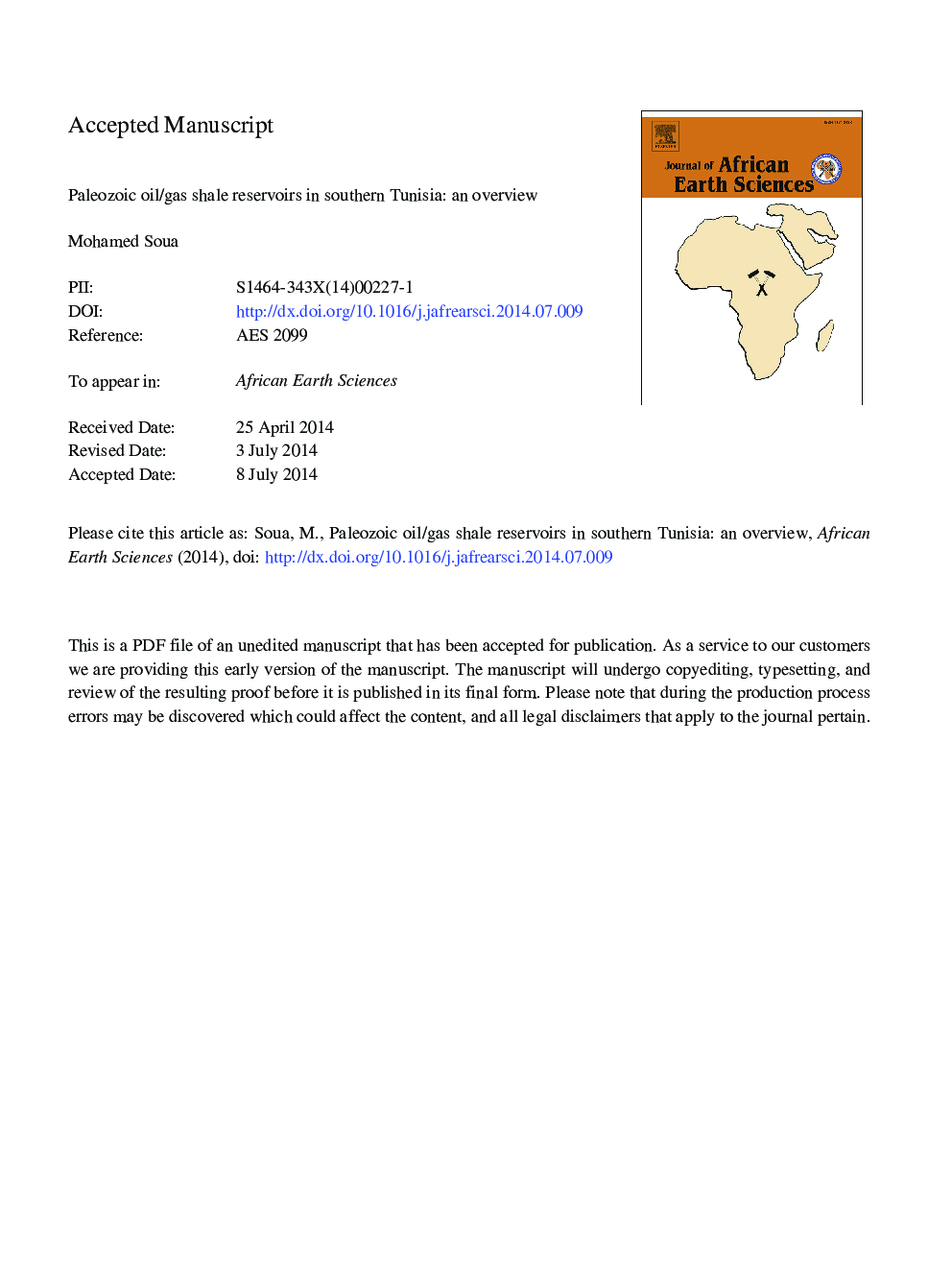| کد مقاله | کد نشریه | سال انتشار | مقاله انگلیسی | نسخه تمام متن |
|---|---|---|---|---|
| 6443786 | 1640207 | 2014 | 105 صفحه PDF | دانلود رایگان |
عنوان انگلیسی مقاله ISI
Paleozoic oil/gas shale reservoirs in southern Tunisia: An overview
ترجمه فارسی عنوان
مخازن شیل نفت / گاز پالئوزوئیک در جنوب تونس: یک نظرسنجی
دانلود مقاله + سفارش ترجمه
دانلود مقاله ISI انگلیسی
رایگان برای ایرانیان
کلمات کلیدی
موضوعات مرتبط
مهندسی و علوم پایه
علوم زمین و سیارات
زمین شناسی
چکیده انگلیسی
During these last years, considerable attention has been given to unconventional oil and gas shale in northern Africa where the most productive Paleozoic basins are located (e.g. Berkine, Illizi, Kufra, Murzuk, Tindouf, Ahnet, Oued Mya, Mouydir, etc.). In most petroleum systems, which characterize these basins, the Silurian played the main role in hydrocarbon generation with two main 'hot' shale levels distributed in different locations (basins) and their deposition was restricted to the Rhuddanian (Lllandovery: early Silurian) and the Ludlow-Pridoli (late Silurian). A third major hot shale level had been identified in the Frasnian (Upper Devonian). Southern Tunisia is characterized by three main Paleozoic sedimentary basins, which are from North to South, the southern Chotts, Jeffara and Berkine Basin. They are separated by a major roughly E-W trending lower Paleozoic structural high, which encompass the Mehrez-Oued Hamous uplift to the West (Algeria) and the Nefusa uplift to the East (Libya), passing by the Touggourt-Talemzane-PGA-Bou Namcha (TTPB) structure close to southern Tunisia. The forementioned major source rocks in southern Tunisia are defined by hot shales with elevated Gamma ray values often exceeding 1400 API (in Hayatt-1 well), deposited in deep water environments during short lived (c. 2 Ma) periods of anoxia. In the course of this review, thickness, distribution and maturity maps have been established for each hot shale level using data for more than 70 wells located in both Tunisia and Algeria. Mineralogical modeling was achieved using Spectral Gamma Ray data (U, Th, K), SopectroLith logs (to acquire data for Fe, Si and Ti) and Elemental Capture Spectroscopy (ECS). The latter technique provided data for quartz, pyrite, carbonate, clay and Sulfur. In addition to this, the Gamma Ray (GR), Neutron Porosity (ΦN), deep Resistivity (Rt) and Bulk Density (Ïb) logs were used to model bulk mineralogy and lithology. Biostratigraphic and complete geochemical review has been undertaken from published papers and unpublished internal reports to better assess these important source intervals.
ناشر
Database: Elsevier - ScienceDirect (ساینس دایرکت)
Journal: Journal of African Earth Sciences - Volume 100, December 2014, Pages 450-492
Journal: Journal of African Earth Sciences - Volume 100, December 2014, Pages 450-492
نویسندگان
Mohamed Soua,
